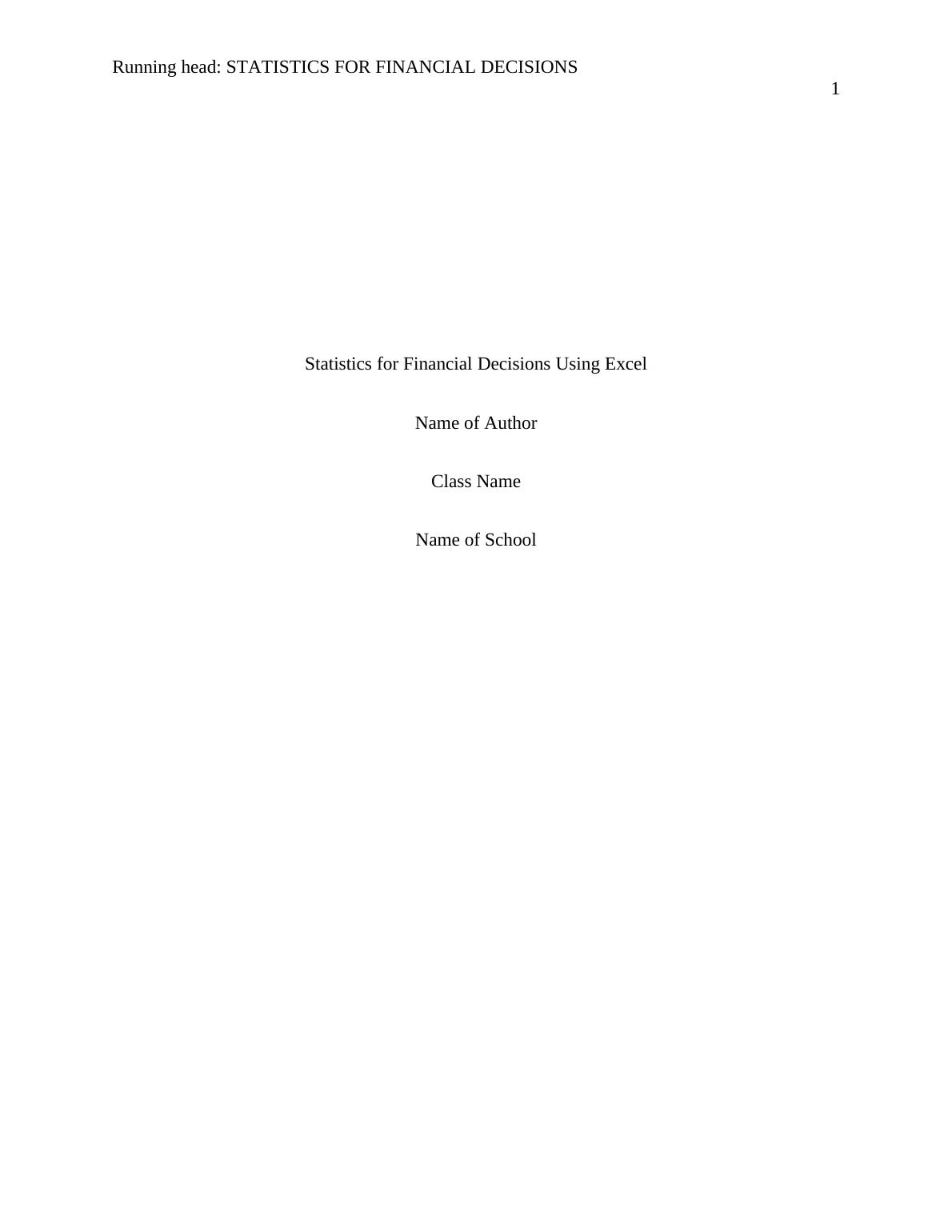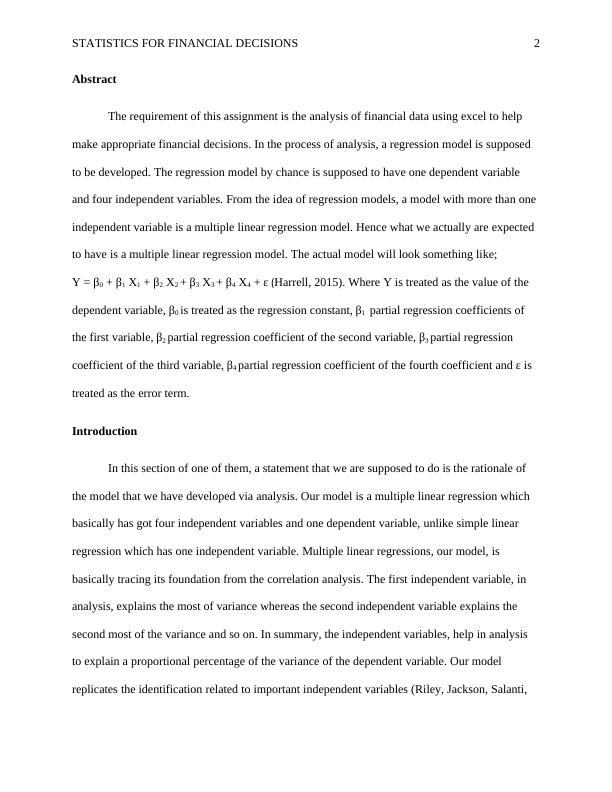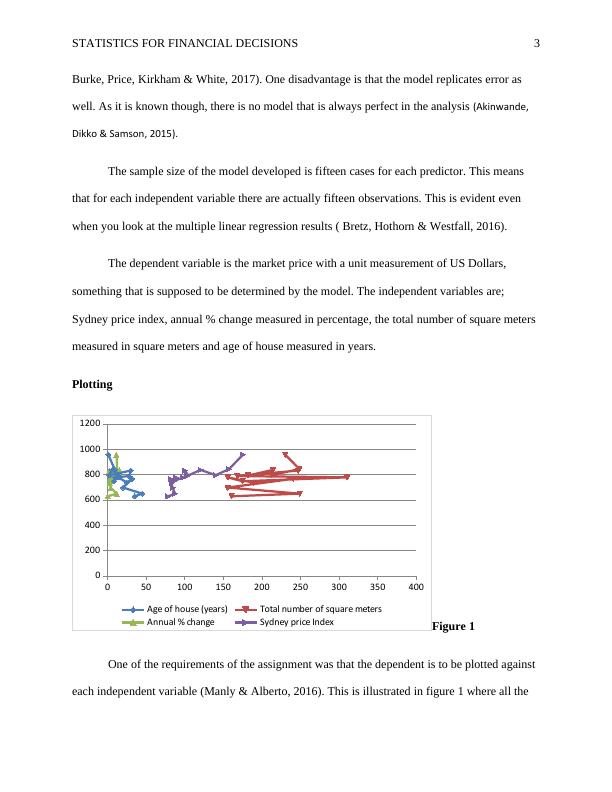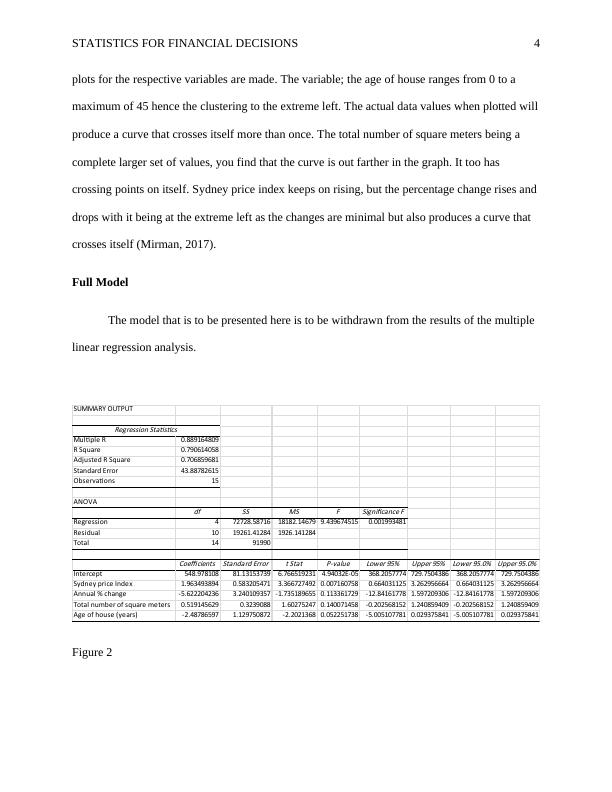Statistics for Financial Decisions Using Excel
This individual assignment requires you to apply statistical knowledge and skills learned from STAT6003 lectures between week 9, 10 and
15 Pages3055 Words88 Views
Added on 2023-01-18
About This Document
This assignment focuses on the analysis of financial data using excel to make appropriate financial decisions. It involves developing a regression model with one dependent variable and four independent variables. The model aims to explain the variance in the dependent variable and make predictions. The assignment also discusses the significance of the coefficients, coefficient of determination, confidence interval, and the relationship between market price and land size.
Statistics for Financial Decisions Using Excel
This individual assignment requires you to apply statistical knowledge and skills learned from STAT6003 lectures between week 9, 10 and
Added on 2023-01-18
ShareRelated Documents
End of preview
Want to access all the pages? Upload your documents or become a member.
The Predictive Model of Economic Loss
|9
|301
|24
Positive Linear Relationship Assignment
|5
|1042
|35
Linear Unbiased Estimator Assignment PDF
|3
|1283
|59
OLS Regression Model for Estimating Unknown Coefficients
|10
|2238
|406
Mortgage payment Gender Income
|8
|728
|10
Term Project - Predictive and Classification Models for Wins and Playoffs
|5
|1360
|76




